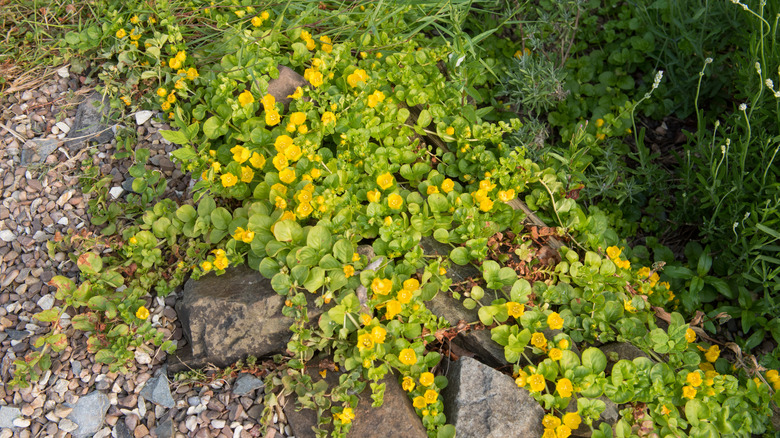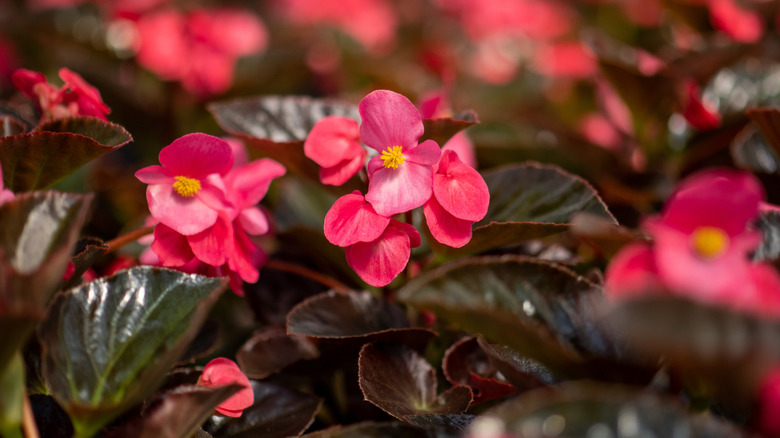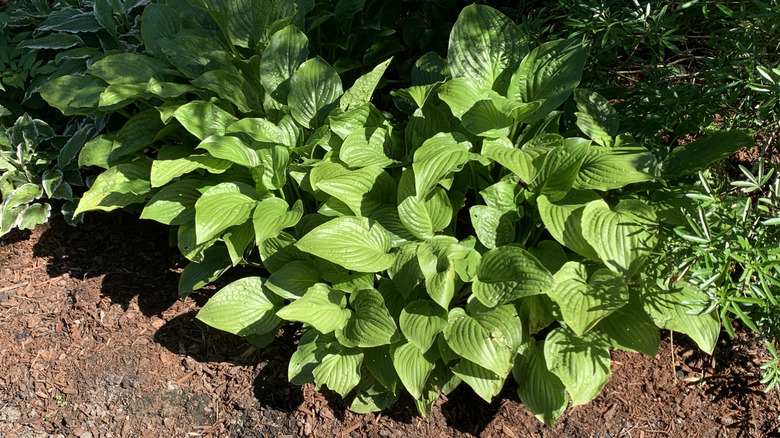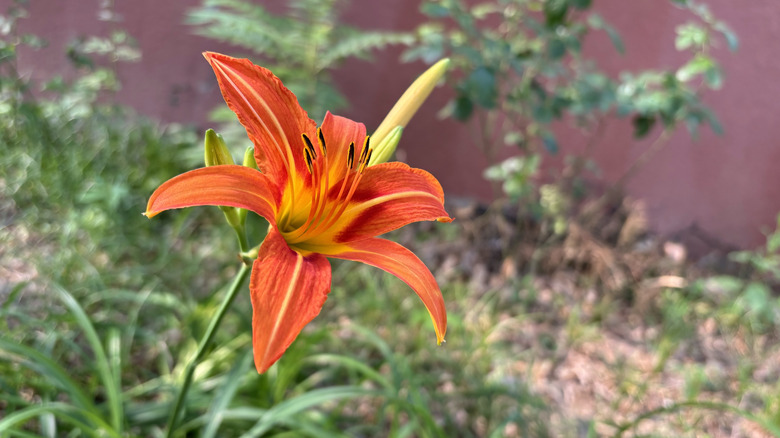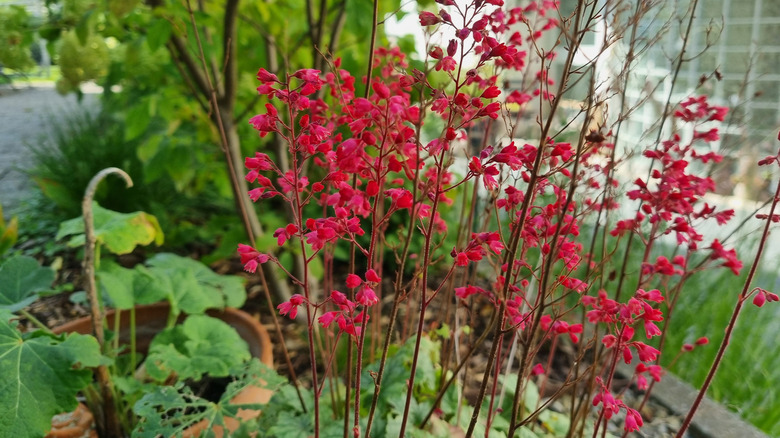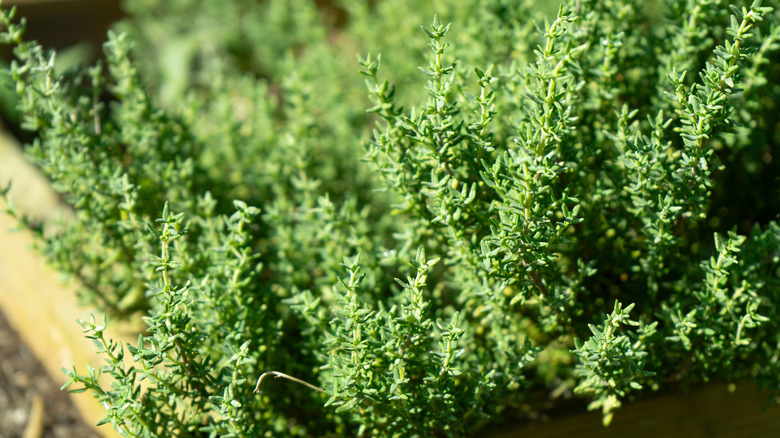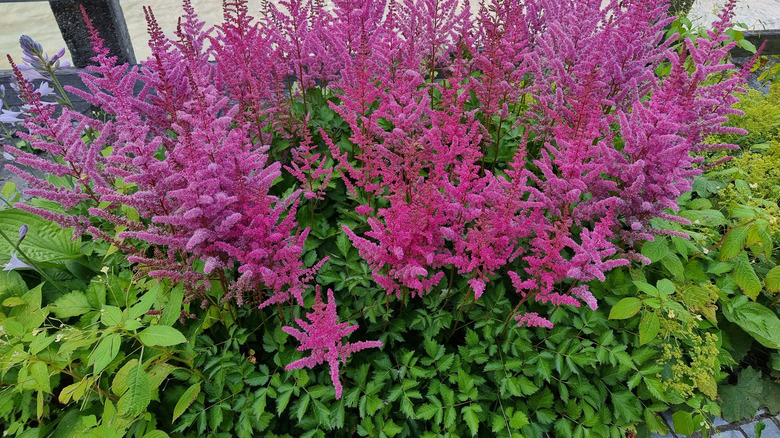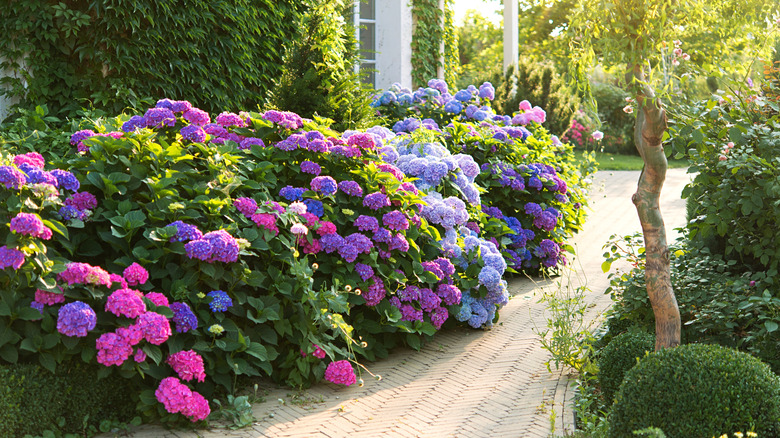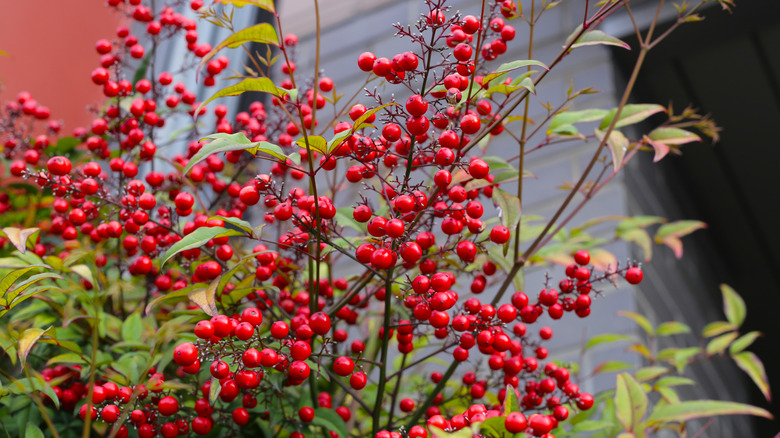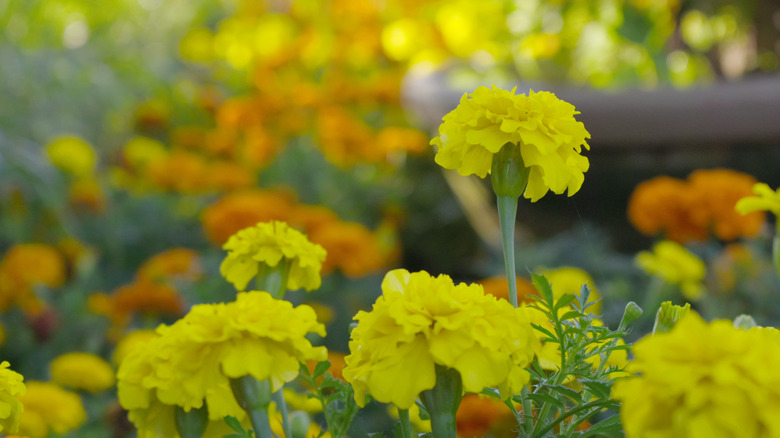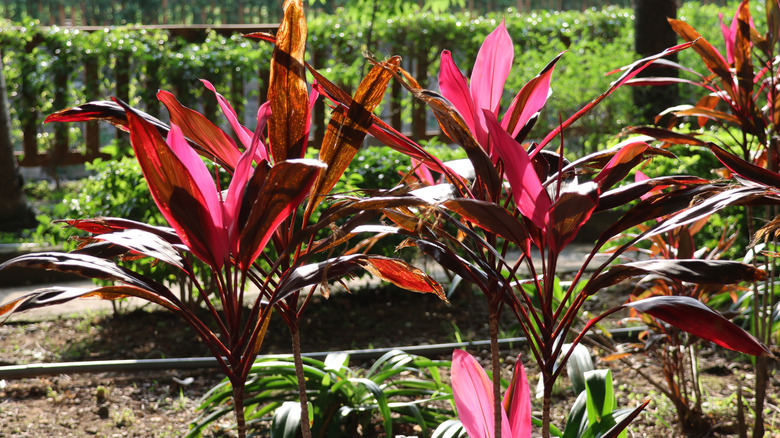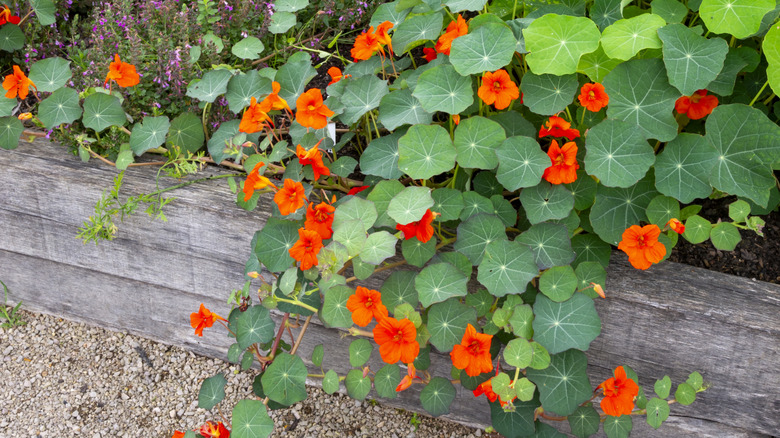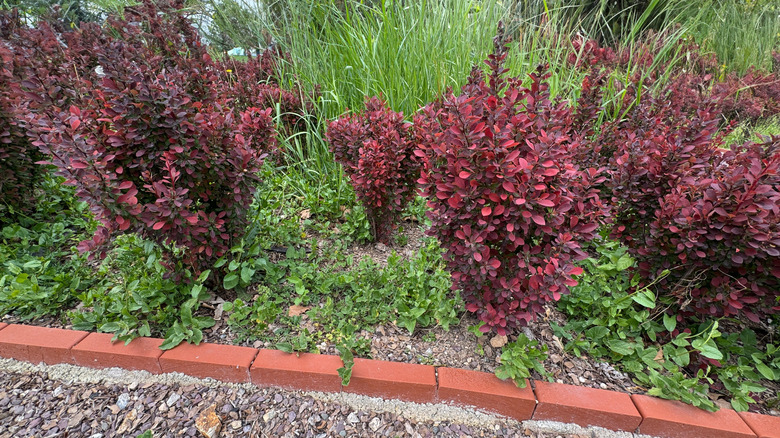14 Companion Plants For A Garden Favorite Ground Cover, Creeping Jenny
A practical way to keep your garden flourishing is through companion planting. This type of planting is where you add different plants in your yard that will aid each other whether that is through enriching the soil, attracting pollinators, reducing pests, or suppressing weeds. Many plants can benefit from having other species next to it, including creeping Jenny (Lysimachia nummularia). From marigolds to ferns, here are 14 companion plants for a garden favorite ground cover.
Creeping Jenny is a ground cover plant with yellow and green leaves and small yellow flowers. This ground cover plant can be placed in a sunny or shady part of your garden. It can be used as a ground cover or even in a large pot with its companion plants. Hanging creeping Jenny plants feature dramatic cascading leaves. Luckily, this plant doesn't have major pest or disease issues if cared for properly. While you may not need to add companion plants near your creeping Jenny, they can help it thrive in your yard. When planting these companions with this ground cover, it's important to select options that have compatible maintenance and care. You'll also need plants that can withstand the same kind of climate. Best grown in USDA hardiness zones 3 to 9 in rich, moist, permeable soil, keep in mind that this plant is listed as invasive in many northeastern parts of North America, causing problems near stream banks, roadsides, and lakes.
Begonias
Add great texture and beautiful color by planting begonias as a companion plant for creeping Jenny. With stunning pink, red, white, orange, and yellow blooms, it is the perfect contrast against the greenish-yellow ground cover. These low-maintenance annuals thrive in porous soil and semi-sunny parts of your garden. There are tons of begonias that will work with the ground cover like Whopper Rose (Begonia x benariensis). As a toxic plant to humans and pets, make sure to monitor them while they play outside near these flowers.
Hostas
As a popular and versatile plant with graceful blooms that is perfect for an allergy friendly garden, hostasgrow best in zones of 3 through 9. With its eye-catching leaves, this plant needs moist, well-drained soil to grow. Overall, this plant is low-maintenance, but you'll need to lookout for snails, slugs, crown rot, and leaf spot. It also does wonders at suppressing weeds. Due to the two plants contrasting foliage and texture, this combo creates a visually appealing look in your garden.
Daylilies
Incorporate a vibrant burst of color next to your creeping Jenny by adding gorgeous daylilies (Hemerocallis). Before planting, it's important to know how to properly care for your daylilies. With the same zones of 3 to 9 as its companion ground cover, this fragrant flower needs moist yet well-drained soil to properly bloom. Just like creeping Jenny, daylilies are pretty low maintenance and can be planted in any amount of sun. While the combo makes a pleasant appearance, daylilies also assist by repelling some pests that may affect the ground cover.
Ferns
Ferns (Pteridophyta) have similar hardiness zones of creeping Jenny of 3 to 8 and thrive in shady parts, as well. Some varieties can even be in zones 2 or 11. Since there is a wide growing range for this plant, you can find many different species happily growing in damp soil and even on rocks. Their feathery leaves help the vibrant creeping Jenny stand out when next to each other. Struggle with keeping them alive? Breathe new life into your ferns using an unexpected household staple: Castor oil.
Coral bells
As a dainty plant that attracts beautiful hummingbirds and butterflies to your yard, coral bells (Heuchera) has tall, beautiful, vibrant red and pink stalks and flowers, it gives your ground cover a pop of color as well as height. The two plants have similar growing needs with permeable soil and any amount of sunlight. For optimal results, grow your coral bells in zones 4 to 9. While it attracts many pollinators, it also deters wildlife, like deer, away from your garden.
Thyme
Thyme is another ground cover plant that is compatible with creeping Jenny. While ideally grown in hardiness zones 5 through 9, this herb is a low maintenance plant that needs permeable soil. Even though the ground cover doesn't attract too many pests and weeds, planting thyme along with it is a good way to get rid of them once and for all. Harvest fresh sprigs as needed from this functional companion plant.
Astilbe
Astilbe is a cotton candy-like flower that will add texture to your shady yard when planted next to creeping Jenny. This colorful flower comes in a wide range of reds, pinks, and whites and has some height, creating dimension to your garden when added near the ground cover plant. Astilbe has the same zones as your favorite ground cover of 3 through 9 and needs moist, permeable soil in any amount of sunshine. They also can deter rabbits and deer who may try to destroy your yard.
Hydrangeas
Add a pop of color next to your creeping Jenny plants by planting hydrangeas. It's imperative to know how to grow and care for your hydrangeas, especially if you want to enjoy their beautiful blooming season. These flowers can be grown in the same area as creeping Jenny because it has a zone of 5 to 9, needs moist but well-drained soil, and can grow in any amount of sunlight exposure. However, you must remember that all parts of the hydrangea are toxic to dogs and cats.
Sedum
Plant sedum next to your creeping Jenny as the perfect ground cover for year round color in your garden. Also known as stonecrop, this is a succulent plant best grown in zones 3 through 9, making it a very compatible plant. The vibrant succulents that bloom on this flower give a fun texture against creeping Jenny.
Heavenly bamboo
As a flowering shrub that will bring drama to your yard look, heavenly bamboo (Nandina domestica) thrives in zones 6 to 9. This plant is tolerant, surviving in many different soil and sunlight conditions. However, it does prefer rich soil. This plant gives creeping Jenny a fun contrast throughout most of the year, even the winter. Heavenly bamboo is an invasive plant in some of the southeastern part of the U.S., like in Florida and Georgia. Also remember that this companion plant is toxic to cats and other wildlife.
Marigolds
Marigolds (Tagetes spp.) are an annual flower that can handle similar conditions of creeping Jenny. Enjoying full sunshine and well-drained soil, these bright orange blooms add a burst of color when next to the ground cover. There are many benefits of planting marigolds in your garden, including being extremely pest-resistant, keeping most insect annoyances away. For larger gardens, strategically disperse your marigolds, like as a border plant to benefit your whole area.
Palm lilies
Enjoy palm lilies (Cordyline spp.) in your garden to add a striking visual contrast when planted near the other plant. These plants have vibrant reddish or purplish sword-like leaves that add height to your ground cover. Best grown in zones 9 through 11, these stunning plants need moist, well-drained soil for it to thrive. Palm lilies can also help your garden by attracting pollinators, creating nesting sites for birds, and being fire-resistant.
Nasturtiums
Attract pollinators around your creeping Jenny while keeping pests away by planting nasturtiums (Tropaeolum majus) next to it. For best results, grow these annuals in well-drained soil. This brightly colored flower can be spotted with cream, yellow, red, and orange blooms, adding a vibrant pop of color next to your ground cover. It even can cascade or fill in any gaps, blending well with creeping Jenny.
Japanese barberry shrubs
Give your creeping Jenny extra charm by planting Japanese barberry shrubs (Berberis thunbergii) next to it. This shrub has a zone of 4 to 8 and needs moist, permeable soil. It can also grow in just about any amount of sunlight. These plants add a striking visual contrast and height next to the ground cover, giving your garden more depth and dimension. Note that Japanese barberry shrubs are invasive in the northeastern part of the U.S., including all of the New England states.
